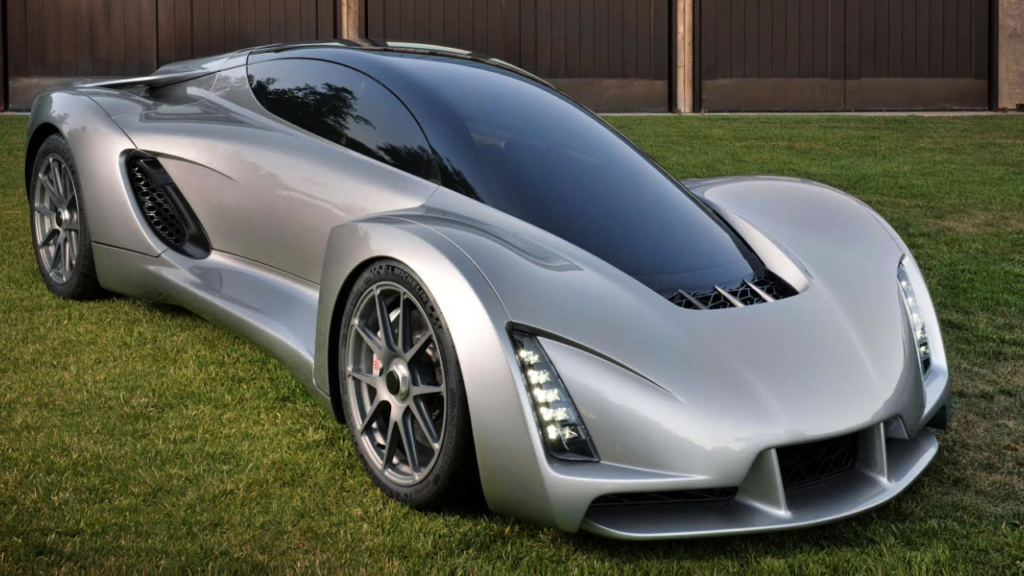Cars are getting cooler with the help of Artificial Intelligence (AI). AI is like a wizard that creates amazing car designs, making them look super sleek and smart.Coolest Car Designs Made by AI.
Let’s check out some of best car designs whipped up by AI, showing how technology can make cars that turn heads and take us on exciting rides!
1: Toyota Plans to Incorporate AI for Designing Their Future Cars
The world of automobiles is keeping pace with the times, and AI has taken the driver’s seat in various aspects of research and development across the industry. Among the frontrunners, Toyota steps forward, revealing its exploration into AI-driven car design. This leap is fueled by a generative AI technique crafted by the ingenious minds at the Toyota Research Institute (TRI).
Before you start imagining an entirely AI-crafted exterior for your next Tacoma truck, let’s clarify the role of AI in Toyota’s plans. Rather than handing over the entire design process to AI, Toyota envisions utilizing this technology during the initial design phases. This is where a multitude of design iterations are crucial, especially when engineering factors are at play.
Imagine Toyota contemplating the creation of a brand-new, spacious two-door coupe. At this juncture, AI would come into play, generating a variety of preliminary designs based on predetermined specifications. For instance, the striking rendering adorning the top of this article has emerged from the creative prowess of artificial intelligence. It showcases the potential of AI-generated designs, which Toyota is keen to harness for its future projects.
2: AI Could Possible Lead the Car Designing Segment in the Future
Car manufacturers invest substantial resources, both in terms of money and time, each year to develop the next hit car design. But what if achieving that goal could be accomplished at a fraction of the cost and within minutes? This is precisely the question that General Motors (GM) and the MIT Sloan School of Management set out to answer through an innovative study.
According to Fox News, John Hauser, a marketing professor at MIT Sloan, told about a fascinating experiment involving a neural network. The core idea revolved around training this neural network using data extracted from GM clinics. This data encompassed images of potential car designs, coupled with corresponding ratings provided by the participants.
Hauser explained, “These evaluations came from consumers participating in theme clinics, where they were asked to assess the aesthetic appeal of various images.”
With only the overall ratings as input, the AI-powered software engaged in an analysis of the images, effectively teaching itself the intricacies of what constitutes an attractive vehicle.
“Our goal was to create a program capable of observing an image and delivering an aesthetic rating,” Hauser elaborated.
Intriguingly, the results of the system’s evaluations for other vehicles demonstrated remarkable proximity to human opinions.
As an illustration, when assigned the task of rating different vehicles, the AI-driven model‘s predictions closely aligned with actual human responses. For instance, on a scale of one to five, the model predicted that the 2013 GMC Yukon XL SUV would score around 1.86, almost indistinguishable from the actual rating of 1.84. Similarly, the anticipated rating for the 2013 Infiniti QX80 was approximately 2.93, closely mirroring its factual score of 2.96.
Overall, the AI predictor and human consumers were in agreement a noteworthy 74% of the time. This study hints at the potential of AI not only to streamline the design process but also to closely replicate human preferences and judgments.
12 Best AI Recipe Generators: The Culinary Revolution in the Digital Era
3: AI Designed a 3D Printed Car
Ever pondered the immense blend of human and machine effort behind crafting an automobile? The colossal expanse of car manufacturing facilities is a sight to behold. Have you ever wondered about the span it takes to conceptualize a car’s design?
These sprawling facilities are not just enormous but also costly endeavors, requiring millions of dollars and an army of individuals and machines to shape a single car. Yet, amid this complexity, a simpler and more efficient method has emerged – the Czinger 21C, a marvel crafted through AI design and 3D printing.
The pioneering endeavor in AI-designed cars began with The Hack Rod. Today, the Czinger 21C stands as a testament to the potential of AI and 3D printing in car creation. Drawing inspiration from the rapid SR-71 Blackbird aircraft, the 21C is the outcome of pure AI ingenuity, with a 3D printer sculpting the final product from aluminum and titanium alloys.
Unveiling the Czinger 21C, the company isn’t merely aiming to fashion hypercars for hefty price tags. Rather, it has a grander vision – revolutionizing the future of car manufacturing. The blend of AI and 3D printing sets the stage for what might be commonplace in automotive manufacturing ahead.
What truly sets the Czinger 21C apart is its centrally positioned driver’s seat. Nestled in this unique spot, the driver experiences a sensation akin to straddling a motorcycle while also capturing the cockpit’s essence. This central driving position, reminiscent of the esteemed McLaren F1, is a rare gem in the car world.
When it comes to performance, the Czinger 21C boasts two versions – one for the road and another optimized for the track. The road-legal variant soars to a remarkable 270 mph.
The mechanical heart of the 21C throbs with a 2.88-liter twin-turbo V8 engine, unfurling a robust 937HP. This power flows through a seven-speed sequential gearbox, capable of revving up to an astonishing 11,000 RPM.
To augment this, the vehicle integrates two electric motors, bolstered by a 2kWh lithium-titanate battery pack powering the front axles.
This duo of electric motors injects an additional 237HP into the equation, culminating in an impressive total of 1174HP. Accompanying this raw power is a kerb weight of 1165 KG, imparting a remarkable 1:1 power-to-weight ratio. Anticipate the launch of this track-centric marvel in 2021, serving as a testament to the dawn of AI and 3D printed automotive excellence.


















